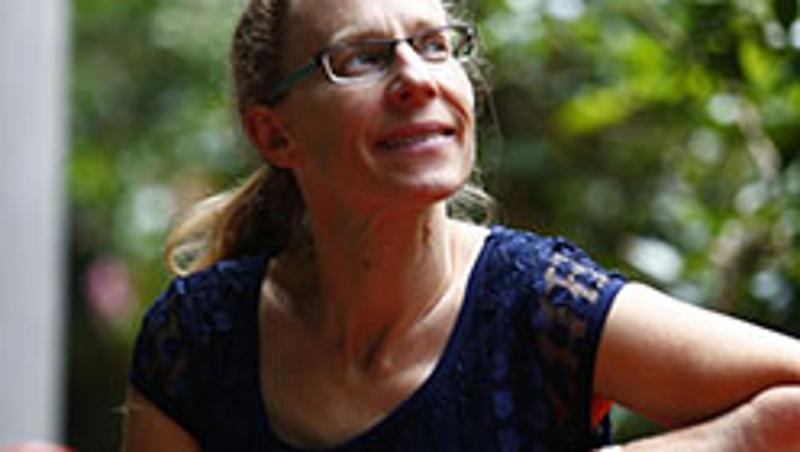
QUT is leading an international study to increase rates of early melanoma diagnosis via a mobile app that can take and send images of suspicious lesions to dermatologists during self-skin or partner-assisted skin examinations for rapid diagnosis or be used as a method of second opinion by general practitioners.
Professor Monika Janda from QUT’s Institute of Health and Biomedical Innovation (IHBI) heads the $581,000 NHMRC-funded study which will develop an improved app to support self-skin and partner-assisted skin examinations and test its efficacy for improving early diagnosis.
The method is called mobile tele-dermoscopy and it combines a magnifying device and a polarised light source with the camera and internet connection of a smartphone.
“Detecting melanoma as early as possible is a life saver,” Professor Janda said.
“Early diagnosis is absolutely critical to survival - patients who find a melanoma in the early stages when it is still thin have a five-year survival rate of 98.7 per cent. A person’s prognosis gets worse the deeper the lesion when discovered.
“Mobile tele-dermoscopy lets people view, photograph, store for reference, or send pictures of concerning skin lesions to a dermatologist via the app.”
Professor Janda said most melanomas were found by patients, families or friends during an incidental or deliberate skin examination.
“Our previous research shows that people can take pictures of suspicious skin lesions that are clear and detailed enough for a dermatologist to be able to decide which lesions need further investigation,” she said.
“Our research has also found strong agreement between diagnoses made by dermatologists and those via tele-dermoscopy.”
Professor Janda said a key goal of the research team was to further improve the clarity of images the app could take and also improve the systems that integrate tele-dermoscopy into the health system.
“This project aims to find how we can best guide people to take, store and retrieve images of their skin lesions during regular self-skin examinations.
“We will also evaluate the cost effectiveness of tele-dermoscopy. Advanced melanoma is a major contributor to health service use and costs, with new treatments costing more than $13,000 per patient a month.”
The research team also includes Professor H. Peter Soyer - University of Queensland; Associate Professor Lois Loescher - University of Arizona; Dr Nicole Gillespie - University of Queensland and Dr Dimitrios Vagenas – QUT.
Partners in this research are FotoFinder Systems GmbH, Princess Alexandra Research Foundation, Melanoma Patients Australia Ltd, University of Arizona Cancer Center Skin Cancer Institute, Medical University of Graz, Skin & Cancer Foundation Inc. Victoria, Skin & Cancer Foundation Australia NSW, Dermatology Service Memorial Sloan Kettering Cancer Centre and QLD Institute of Dermatology.
Related articles:
Pocket doctor helps detect skin cancers
New tool to help melanoma’s most at-risk group detect cancer early
Text messages a new tool in the fight to prevent skin cancer




